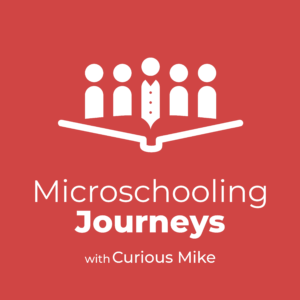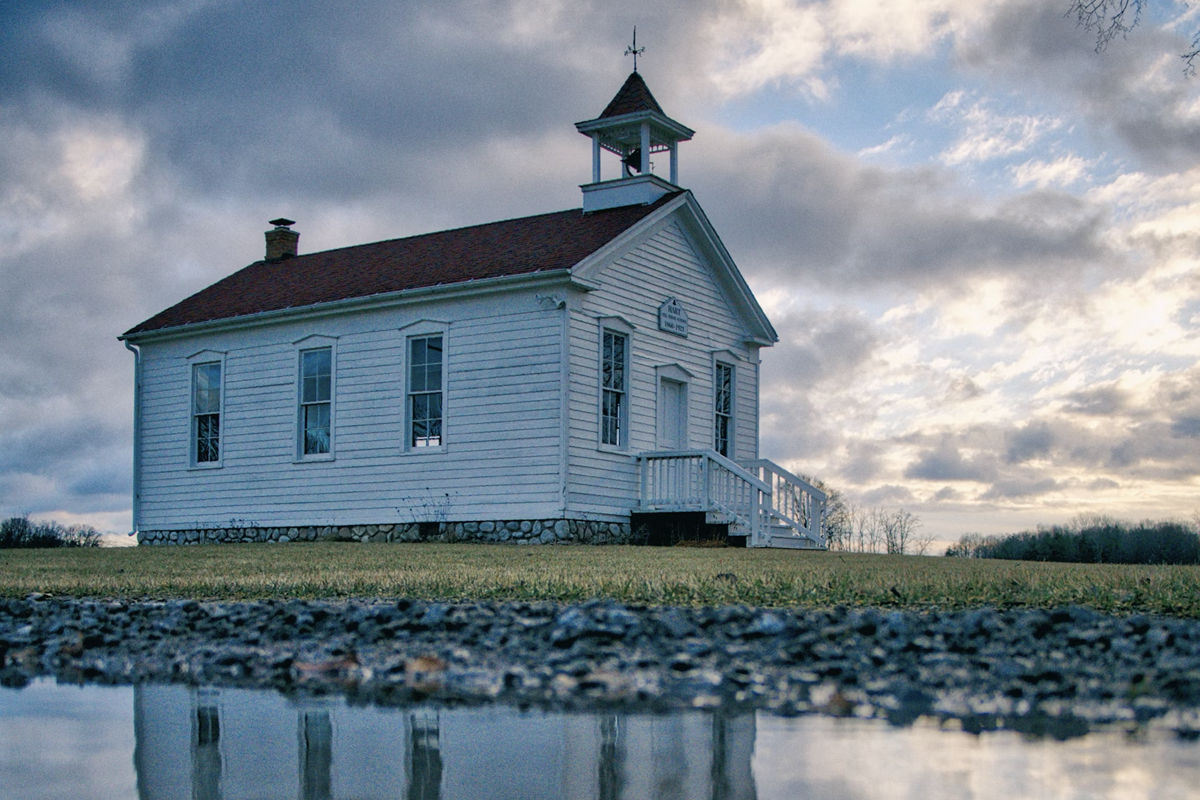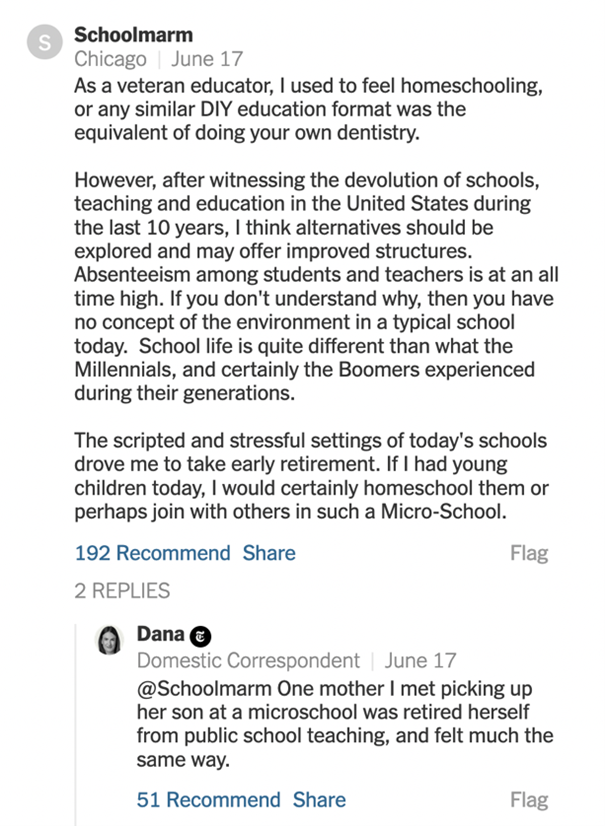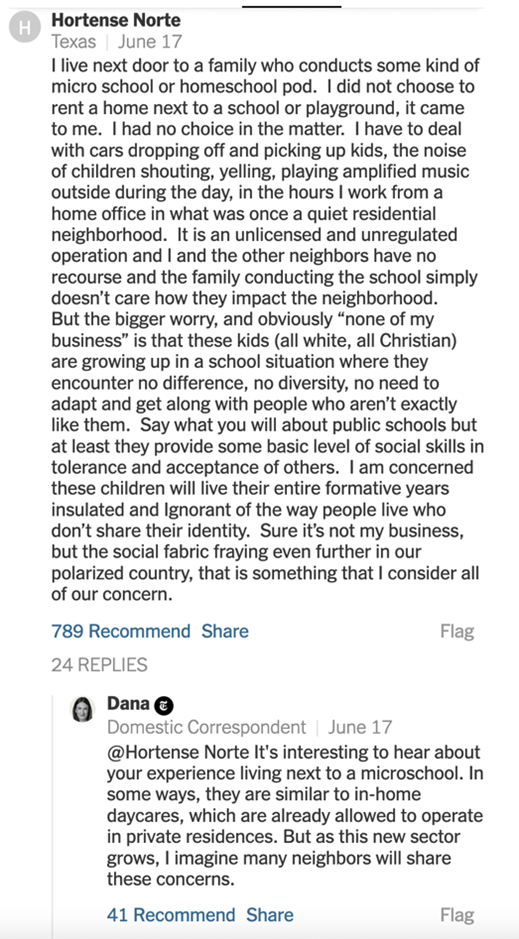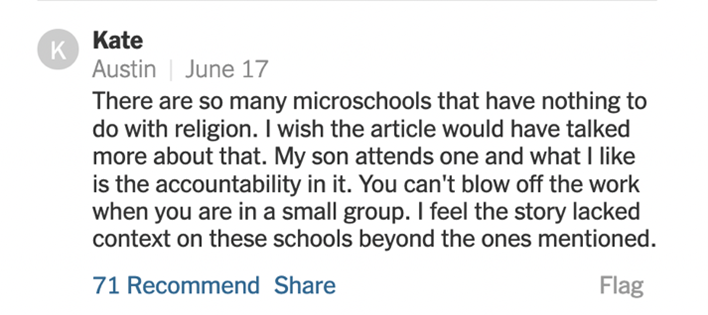Microschool Journeys with Curious Mike is an eight-episode podcast series airing in January and February 2025. Host Curious Mike explores the rise of microschools—small, innovative learning environments—with stories from his personal experiences, expert insights, and visits to models like KaiPod What happens day to day, in terms of socialization, achievement, and personalization? How quickly do they enter and exit the market? Who pays? Perfect for educators, parents, and policymakers, this podcast offers a deep dive into this fascinating straddle between homeschools and traditional schools. Listen today!
Play the latest episode:
How Mike Got Curious About Microschools…
In 2010, I talked with AEI’s Rick Hess about an idea called Starbucks Schools. He wrote:
One example of an alternative high school model that reimagines structure as well as pedagogy is the Starbucks School design dreamed up by Michael Goldstein, founder of the Boston-based MATCH charter school.
For the same money that a city like Boston spends annually on a typical at-risk high school student, it could create a class of eight students, buy each a laptop and a bus pass, secure them a block of online tutoring time from an established provider, and pay a top-shelf teacher $110,000 plus benefits to meet them each day at a Starbucks or YMCA.
The Starbucks model would give up on dragging these students into the local school and instead focus on matching the smallest possible group of students with a skilled, dynamic teacher in a comfortable environment.
I couldn’t get much support for this microschool-inside-of-a-charter-school idea.
Why not?
Massachusetts charter regulators thought regular Boston charters were doing well. And they were! So demand for weird new models was low. Even though, inside these charter schools, there was a group of kids we served poorly. For these kids, the social experience of a few hundred kids in a building – it just didn’t work.
In 2011, I was invited to a big Harvard project. It was The Futures Of Education Reform and the food was good. I wrote about Individual Teacher Choice (see here in Education Week). My take: maybe proven, skilled teachers could call their own shots – and one way to do that would be to start a microschool. My colleagues shrugged – nobody much liked the idea…
In 2016, my friend Scott and I explored whether Boston families would want micro middle or elementary schools that featured crazy good teachers and flexed on memorable “wow moments.” It turned out parents did want crazy good teachers and “wow” moments – but in a conventional sized school. Just not a micro. They wanted normal school socialization. Scott responded to that demand, and ended up creating precisely that (his 3 conventional sized private schools are thriving).
Over the years, I visited various microschools, like Prendas in Arizona (pretty, pretty good as Larry David would say); Altschool in Manhattan (kind of chaotic; ultimately closed); Wildflower Montessori in Cambridge (warm inviting vibe).
In 2021, I advised a microschool startup called Schoolhouse. Founders Brian and Joe got 55 “pods” up and running, an amazing feat. Parents liked ‘em! I visited one near my home: 6 kids and a wonderful teacher named Shara Conroy. Kids loved it.
Then I asked: “When Covid ends and your regular public school goes back into session, will you want to stay here in the micro?” One quickly blurted: “No way – I want to be part of the scene at school, the hallways, the lockers, the lunchroom…” Four others nodded.
One sweet, introverted kid was really bummed. He loved this microschool precisely because it avoided “the scene.” He dreaded the return.
This was typical. Many parents had been largely satisfied with affluent suburban public schools, and got temporarily mad because those schools stayed shut for Covid while nearby private schools were open.
But when the public schools finally re-opened, most microschool kids wanted to return to the 300+ student social experience, and so most parents forgave the public schools and resumed status quo. For Schoolhouse, families were too spread out geographically, so there was no way consolidate the kids who still wanted microschools. Eventually, all 55 pods closed.
But other microschool chains have flourished – Kaipod, Wildflower, Prenda, Primer.
A. Pioneer has already covered “the basics” of microschools in previous work.
For example, podcasts with:
Amar from Kaipod;
Kelly from Prenda;
Ashley from the National Microschooling Center.
Start there if you want the basics.
For these podcasts, called Microschool Journeys, my wonderful producer Avonlea and I are digging a little deeper….our pods start out assuming you know something about these entities.
If not then here is….
B….Background reading on micro schools
The Free Press: Return of the one room schoolhouse
Tampa Bay Times: Micro schools are going big in Tampa
Brookings: The coming rise of Microschooling
The74: Failed WV Microschool fuels state probe and soul-searching
Evidently teachers unions create “Opposition reports” – here’s one on this topic
…and a Wall Street Journal response
Nerdy essay in Education Next that I loved: about the word microschool itself
Parents Magazine: How do microschools help black kids learn?
Historical: One Room Schoolhouses in the 1800s and early 1900s
New York Times: A school with 7 students
C. Comments from that NYT story were representative of that readership
Schoolmarm liked the idea
Kate wanted reporting on the many secular microschools…
D. Curious Mike Questions about Microschools include:
1. Microschools have low barriers to entry (compared to starting regular sized private schools, that is). A teacher can say “Here’s my website, my location, I’m open for business.” If she finds 10 kids, the basic economics might work.
I’m not saying it’s easy to start a microschool. There’s a Field Of Dreams sentiment (if we build it they will come) that does not always pan out. How often does that happen? I see examples here and here but not clear data.
A microschool founder may have a vision. She finds 4 perfect customers but needs 8 more to make the economics work. What then? Does she bend and start to include families who don’t want her precise vision?
That was one of my takeaways in my NYC visit to Altschool. They were prepared for self-motivated students. They admitted some who were pretty off the wall – didn’t concentrate well and were quite distracting to the other kids. Teachers/guides tried to nudge them on track but it was a losing battle. The self-motivated kids told their parents what was going on and eventually that was that.
2. Microschools have low barriers to exit. When a teacher leaves a job in a traditional school with 30 to 100 other teachers, the school stays. They even survive years of, say, 40% teacher turnover.
When a teacher leaves a microschool, though, what happens? I could imagine the whole tiny institution can disappear in a flash.
The same is true on the student side. If 4 kids leave a 10-student micro school, it fundamentally calls the question for the other 6 kids: do we still want to be here?
There is 2-sided instability. Will microschools frequently close? If so, how will that affect demand over time, for the “brand” of microschools? In my experience with traditional sized schools, parents like continuity and stability.
3. Homeschoolers going “bigger” and traditional schoolers going “smaller”
The social appeal to a homeschool family is clear. You were 1-on-1. At the micro you’ve got another 10 or 20 or 50 kids to hang with.
I wonder, however, about the other direction. If you’re a kid who likes the normal sized school, then going from 300 to 10….that is a step down. Are there many such transfer students? As I mentioned however with Starbucks schools: there are some kids stuck in traditional schools who hate it. Don’t want to wake up Monday 7am. Dread it. Maybe bullied. How often are they able to discover microschools?
4. Can anyone combine Blue State Education Budgets with Red State ESAs? In Florida, the ESA amount is $8,000 per student per year; in West Virginia it’s about $5,000. Small dollars.
Here in Boston, the per-pupil expenditure is about $30,000 per student per year. Imagine the types of microschools a teacher could start if she could serve 12 kids at that rate. She could be paid $250,000 per year and still have $110,000 for rent, insurance, materials, etc. Field trips to the Grand Canyon and the Museum of Modern Art.
5. What is student achievement in microschools? How would you even assess that – a kid goes to Kaipod 2 days a week and is home with Ma 3 days a week. What gains are assigned to each? (This is an interesting measurement problem, too, with public schools, almost never discussed. Suburban school districts are given credit for excellent math test scores – when it seems that many of those high scores are generated by private-pay tutors, not the schools. In fact, the prevalence of these tutors indicates parents think the schools are doing a bad job on math teaching).
6. What’s typical hour by hour experience in the microschool? Yes, in theory, the kids each have individualized pacing; they pick from online classes and tools. I get it. But my friends actually inside of these microschools say it’s hard to find quality, relevant online classes (our Homeschooling Journeys podcast with Tiffany from West Virginia hit that theme; the class she wanted was cancelled; the other similar classes seemed much less appealing). What’s the over the shoulder experience of these guides? Is it a light check-in? What happens if the kid is persistently goofing around or stuck?
7. What’s the true number of kids in microschools? I’m seeing estimates of 1 million and 2 million – but I’m digging through the citations, and those aren’t adding up.
Feel free to send me other questions you have: mgoldstein@pioneerinstitute.org

